Dealing with bento leakage – Bento tips and reflections #2
My first bento tips and reflections post was on how to keep sandwiches from getting soggy.
I’m now going to address a topic that’s been raised by a few of my readers via comments and email:
Dealing with bento leakage
Test if your containers are leak-proof before you pack your lunches in them. Fill the bento box/lunch box with water, secure with its bento belt and/or bento bag and shake it around. Turn it on its side, and leave it on its side for a while. Tip it upside down, and leave it upside down for a while. If liquid leaks out easily, it’s probably not a good idea to pack liquids or very wet items in that container. I’ve seen Lock & Lock containers that are advertised as leak-proof (and microwave-safe, which is handy, as many of the plastic cute bento boxes can’t be used in the microwave) but haven’t tried them for myself yet.
Read Maki’s post about Lock & Lock, including comments on their leak-proof qualities, at Just Bento.
Many of the commenters at this post at Vegan Lunch Box sing the praises of Lock & Lock as leak-proof containers.
As another example, see this discussion on Flickr where Biggie, author of the fantastic bento site Lunch in a Box, explains how she tested a bento set for its leak-proofness.
I’m sure there are other leak-proof containers out there suitable for bento lunches. Feel free to share your recommendations in the comments, guys!
Don’t pack liquids or very wet items in your bento box unless it has a secure seal/cover and the container has passed your leak-proof tests (as described above). That said, I simply avoid packing very wet items or liquids in my bento boxes. Down the track I hope to get some leak-proof, specifically-designed-to-carry-liquids containers so we can take soups and other liquid items to work for lunch, but at the moment I don’t have any, so I just don’t pack such items for lunch.
Drain wet/saucy items before packing. My “beetle” bento box (pictured below) has a pretty good sealed top tier, so if I was ever going to pack wet items, such as a meat dish in some sort of sauce, that would the the bento box I’d use. If packing a noodle or pasta (or any dish) that comes with a sauce, I’d use a spoon or chopsticks to place the noodles, pasta, meat or vegetable items in the bento box/container first, then add sauce sparingly. To avoid sogginess as well as leakage, you may want to put sauces in a separate container (see tips below regarding packing sauces).
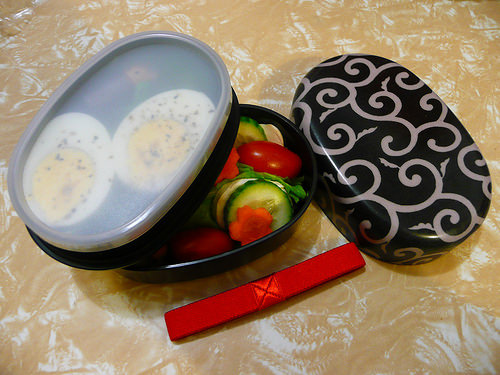
In addition to draining wet fruit before packing, wipe all washed fruit dry before packing.
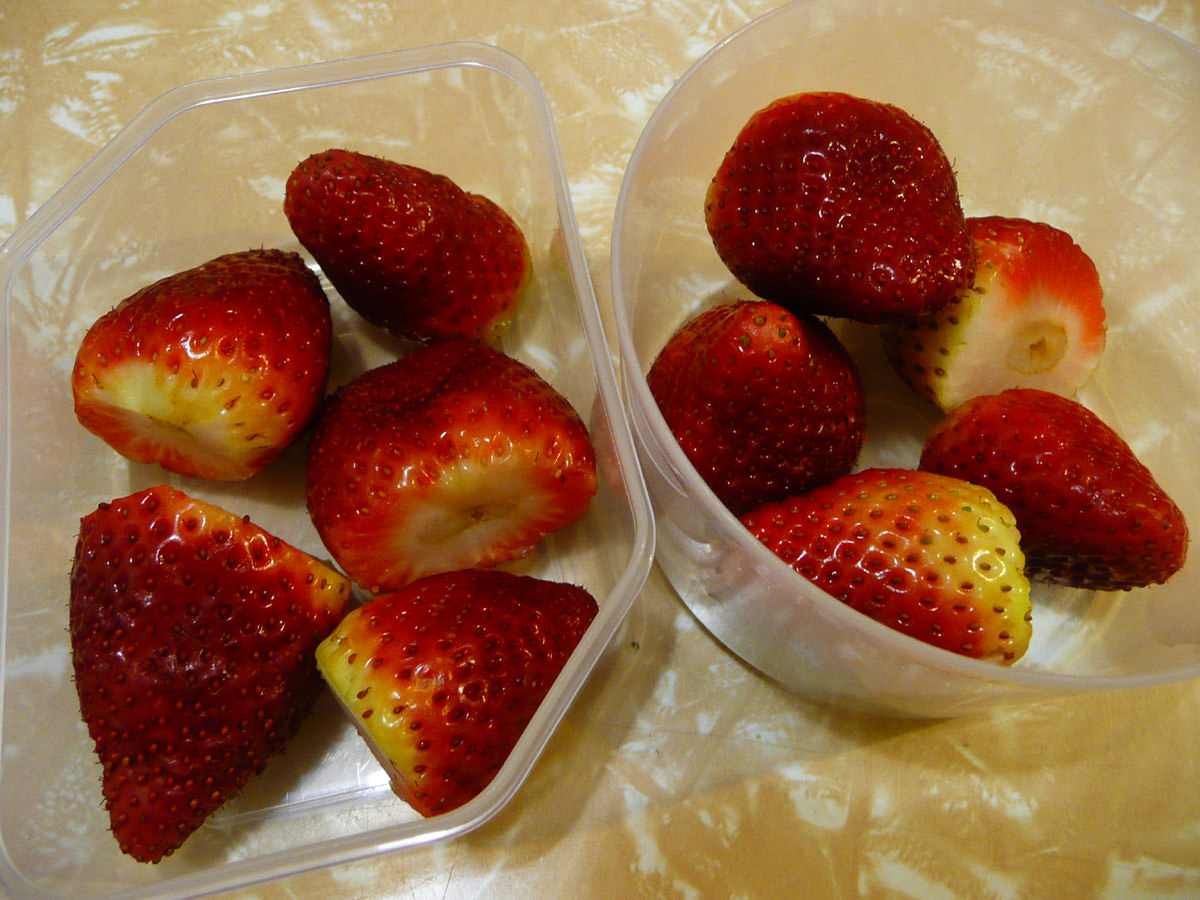
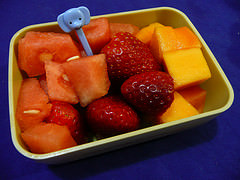
Pack the wetter or potentially leakier fillings in bento boxes that have a lid that hangs over the top. My “beetle” is a good bento box in this way. The top tier of the bento box is completely covered by sides of the bento box lid.
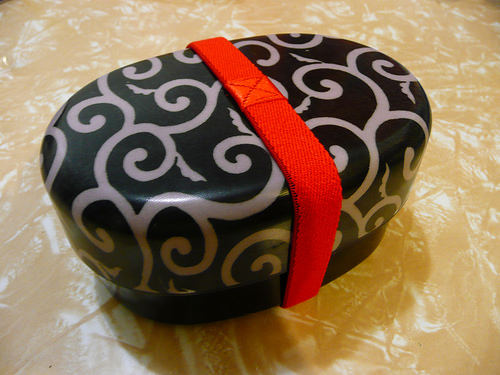
Tightly enclose the bento box in a plastic bag (or some other waterproof bag) before placing it in its bento bag or wrapping it up in a cloth.
The plastic bag may not be much help if you suffer a serious spillage/leakage incident (which should not happen if you take precautions and don’t pack liquids or very wet items in the first place), but it will keep small leaks and spills from messing up your bag in the first instance.
Put sauces (such as tomato sauce), creamy salad dressings and dips in containers with lids, and make sure they’re packed fairly tightly in the bento box so they won’t slide or move around or tip over in transit, increasing the risk of spillage/leakage. You’ll want to keep salad dressing separate from the salad until you’re ready to eat it anyway, to delay the vegetables wilting or going soggy. In photo here the tomato sauce is in the lidded container, kept in its place by the crumbed fish and broccoli and the bento box lid that goes on top.
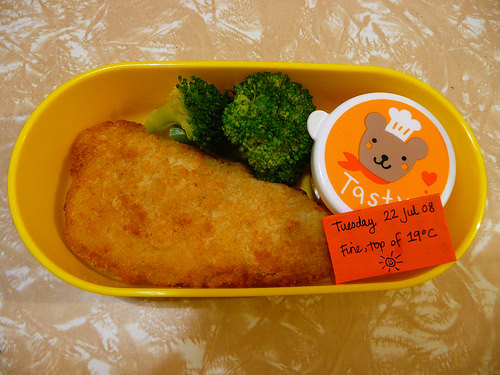
For thin sauces (such as soy sauce or oil/vinegar based salad dressings), use individual sauce bottles designed for bento, which are pretty spill-proof when the lids are screwed on tightly. I also save the unused packets or bottles of soy sauce when we eat Japanese takeaway food and use them in bento lunches later. If you’re not into “cutesy” accessories, I’m sure there are non-cutesy sauce bottles you can use.
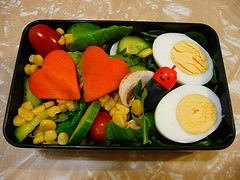

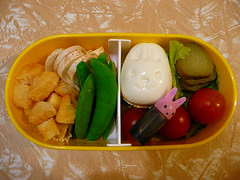
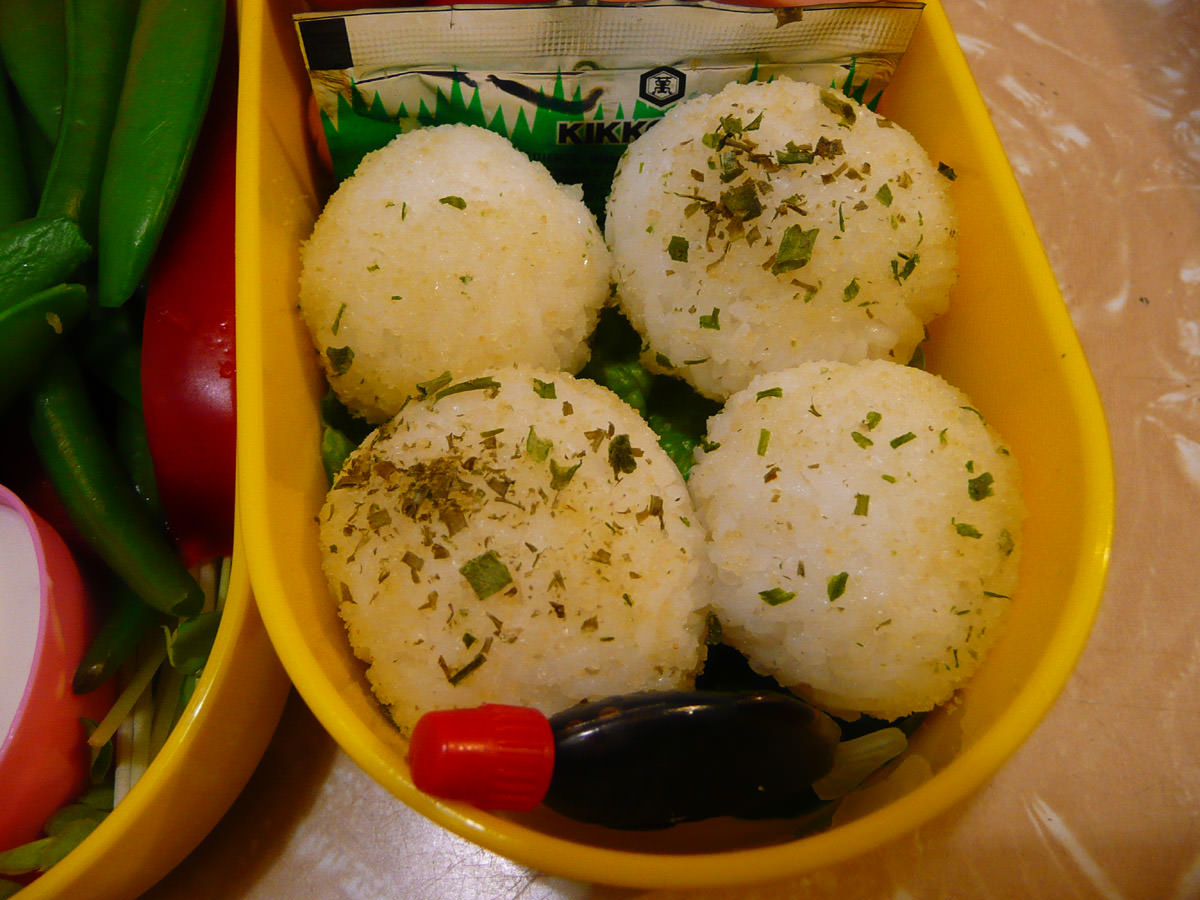
Sauce bottles
If you’re interested, you can check out the following links for bento sauce bottles:
Lunch Animal Sauce Dispenser Set
3 Variety Square Sauce Bottles (not so cutesey)
Colorful Fish Shape Soy Sauce Bottle
Strawberry & Cucumber Sauce Bottle
Shinzi Katoh apple sauce bottles
Don’t overfill your bento box. Of course, you’ll want to fully utilise the space in your bento box (and as I’ve described above, a full bento box will keep sauce containers and items from moving around in transit), but take special care not to exceed the height limits of your bento box tiers. If food sits too high in the bento tiers, the lids won’t sit flat, and although a bento belt may hold the bento box tiers and lids together, there’ll be gaps through which leakage can escape.
Cover your thicker sauces and dips with plastic wrap, if you don’t put them in containers with lids. Again, make sure they’re packed in tightly – use food items to keep sauce containers in their place – I’ve packed this tier full while remaining within the height limits and have used the baby carrots to keep the sauce container positioned in its corner.
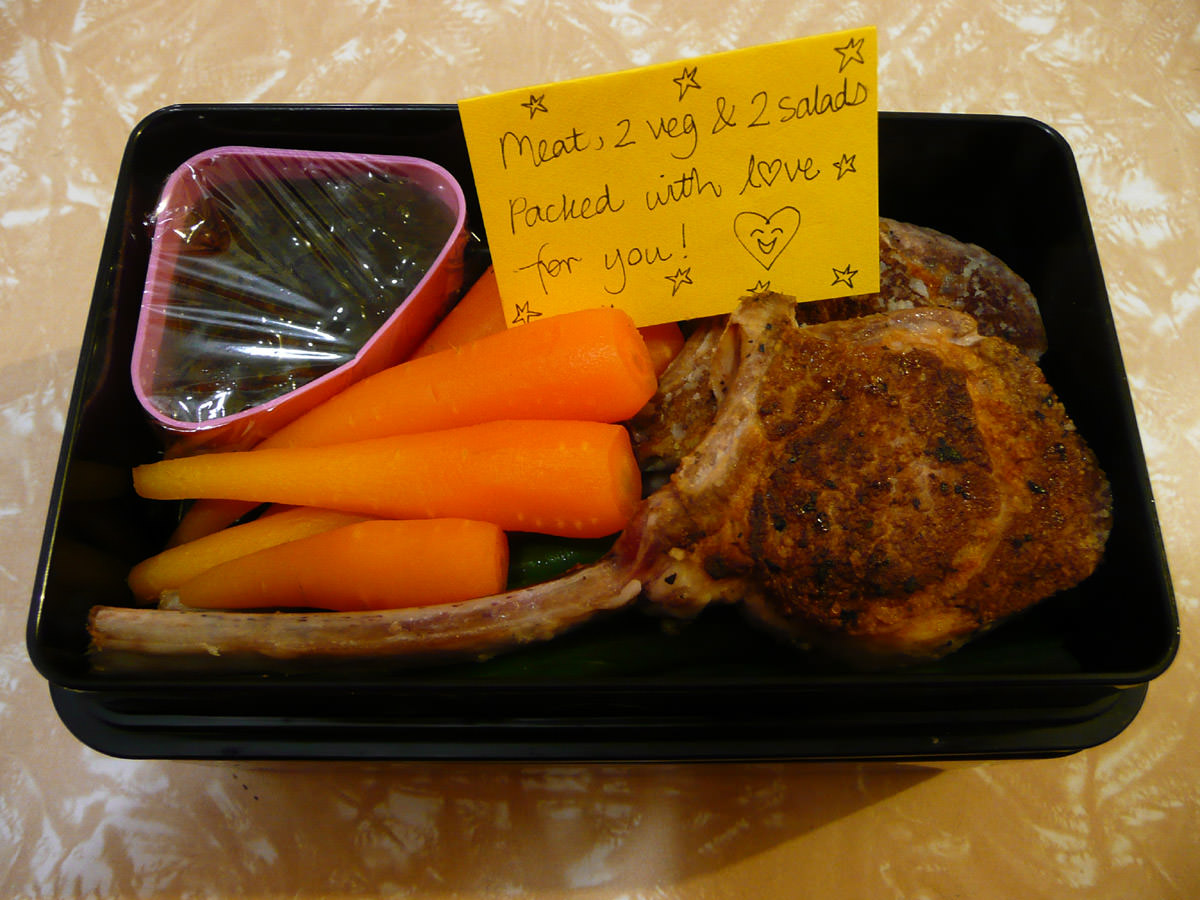
If I had to carry the bento box to work in a backpack, I’d put the bento box in a plastic bag, then in its bento bag or bento cloth, then pack it upright and as snugly as possible in the backpack so it wouldn’t move around too much.
I tend not to carry my bento bag in my backpack for the journey to work; I prefer to carry it in a separate bag (whether the bento bag or another carry bag) my hand. This way I can ensure the bento box stays upright in transit.
I hope this has answered some of your questions. Feel free to add your own tips if you have any good ones to share.